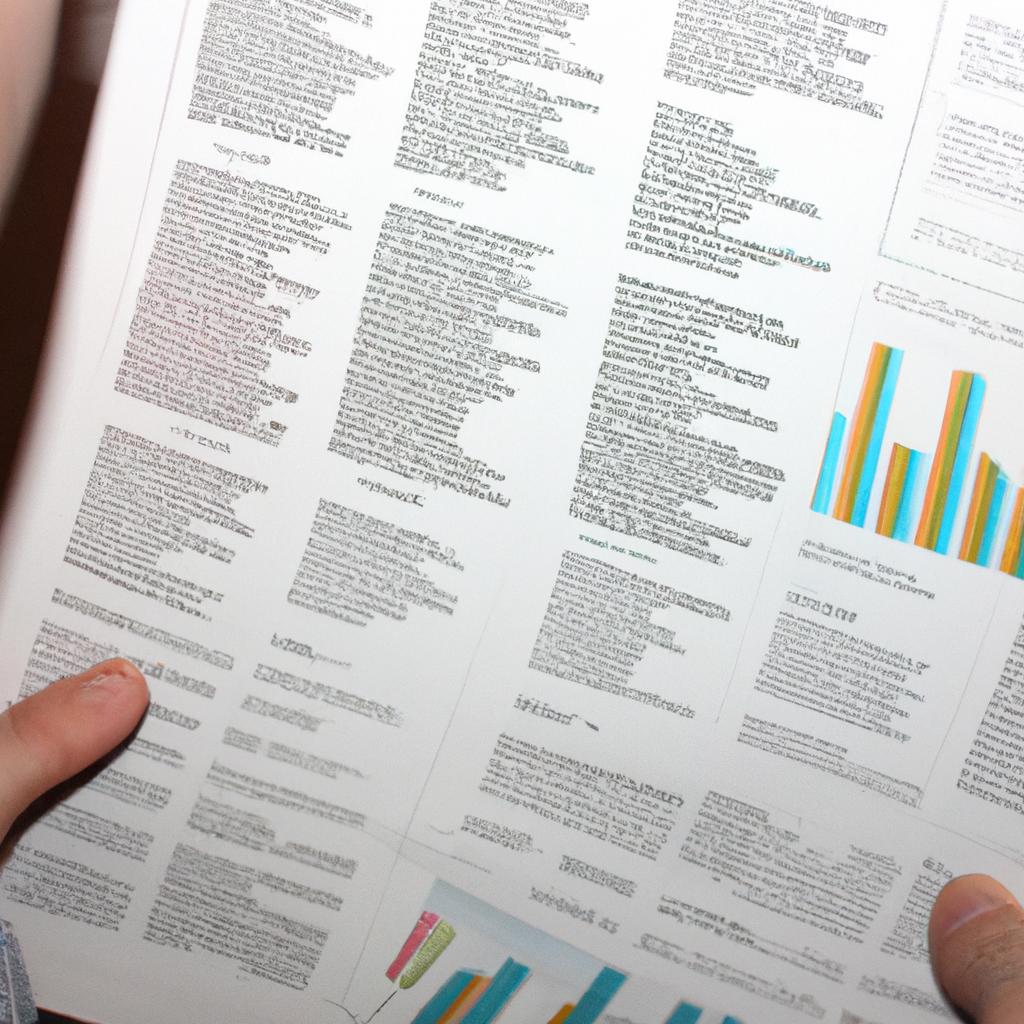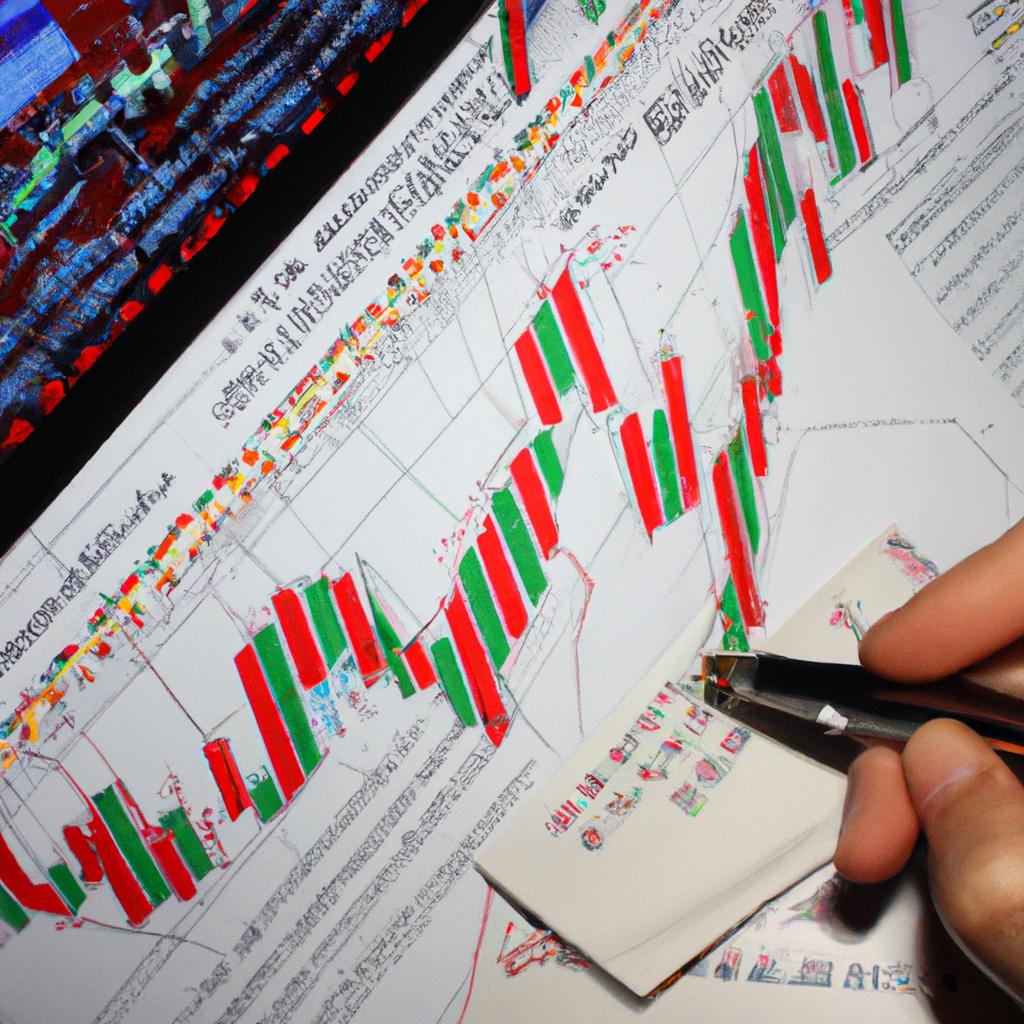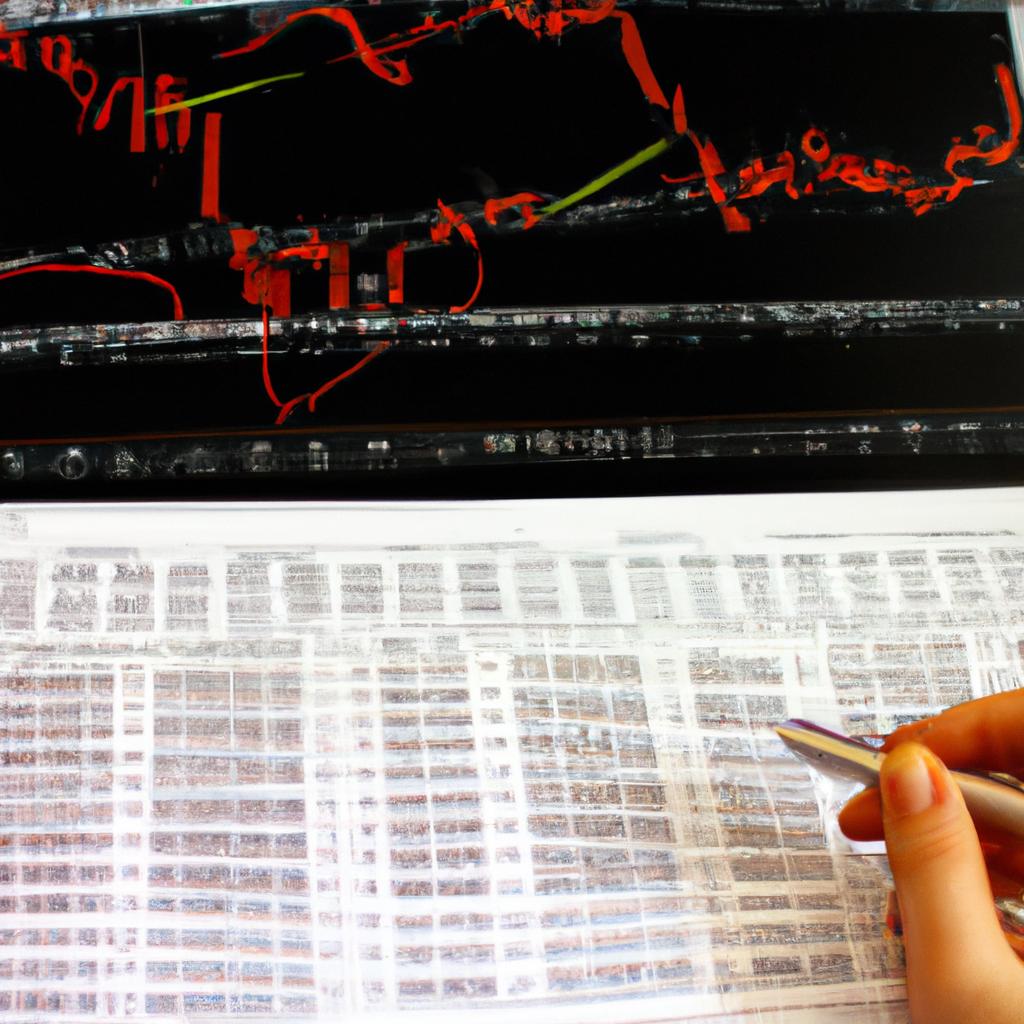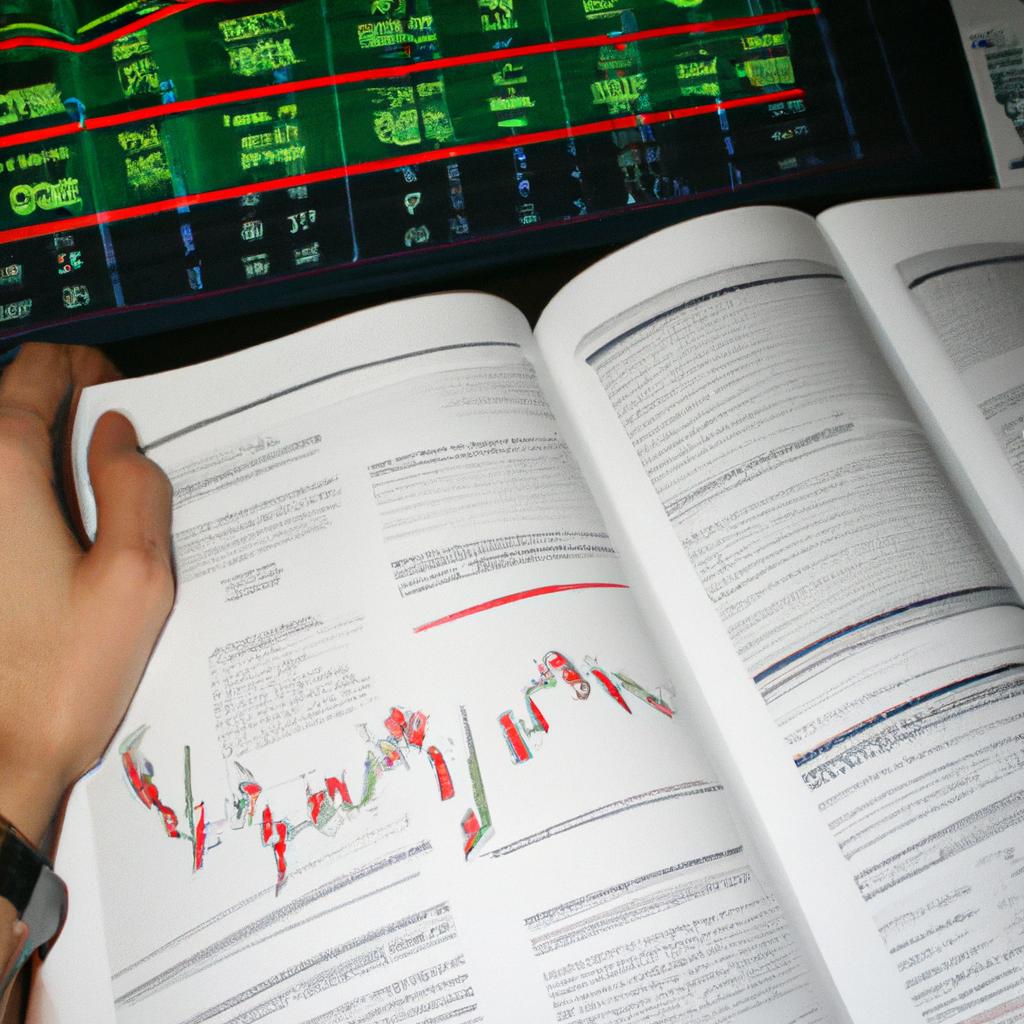Commodities: Investing in Business

The world of investing is vast and multifaceted, offering individuals numerous avenues to grow their wealth. One such avenue that has gained significant traction in recent years is commodities investment within the realm of business. Commodities, which include raw materials like gold, oil, and agricultural products, have long been a fundamental part of global trade and economic growth. By understanding the dynamics behind commodities markets and effectively navigating them, investors can potentially reap substantial financial rewards.
To illustrate the potential benefits of commodities investment within the business sector, let us consider a hypothetical case study. Imagine an investor who recognizes the increasing demand for clean energy sources as societies worldwide strive to combat climate change. This astute individual decides to invest in renewable energy commodities such as solar panels and wind turbines. As governments implement stringent regulations promoting sustainable energy practices, the demand for these commodities surges exponentially. Consequently, our savvy investor not only contributes to environmental preservation but also stands to gain financially from this burgeoning market trend.
In this article, we will delve into the intricacies of commodities investment within the context of business. We will explore how various factors influence commodity prices and discuss strategies investors can employ to capitalize on these fluctuations successfully. Furthermore, we will examine real-world examples where businesses have leveraged commodities investment to increase their profitability and gain a competitive edge.
One example of a business leveraging commodities investment is a company in the food industry. Let’s say this company specializes in producing packaged goods, such as cereals and snacks. By closely monitoring the prices of agricultural commodities like wheat, corn, and soybeans, the company can strategically time their purchases to take advantage of lower prices when they occur. This allows them to reduce their production costs and maintain competitive pricing for their products.
Additionally, understanding commodity price trends can help businesses anticipate potential supply chain disruptions. For instance, if a company relies heavily on oil for transportation or manufacturing processes, closely monitoring oil prices can provide early warning signs of potential cost increases. Armed with this knowledge, the company can explore alternative energy sources or negotiate favorable contracts to mitigate the impact on their bottom line.
Furthermore, some businesses directly participate in commodities trading as part of their operations. For example, mining companies invest in commodities like gold or copper as they extract these resources from the ground. By effectively managing their commodity holdings and navigating market fluctuations, these companies can maximize their profits when prices are favorable.
In summary, commodities investment within the realm of business offers various opportunities for growth and financial success. By understanding commodity markets’ dynamics and employing effective strategies, investors can position themselves to capitalize on price fluctuations and potentially achieve significant returns. Moreover, businesses that leverage commodities investment can optimize their supply chains, reduce costs, and gain a competitive advantage in the marketplace.
Supply and demand in the business world
Supply and demand play a crucial role in the business world, shaping market dynamics and influencing investment decisions. Understanding how supply and demand interact is essential for investors looking to navigate the commodities market successfully. To illustrate this concept, let us consider the hypothetical case of Company XYZ, a multinational corporation involved in manufacturing electronic devices.
In recent years, there has been a significant increase in consumer demand for smartphones, leading to an exponential growth in sales for Company XYZ. As a result, the company’s suppliers struggled to keep up with the rising demand, causing delays in production and increased costs. This scenario demonstrates the intricate relationship between supply and demand within the business realm.
To further explore this topic, we can examine four key factors that influence supply and demand:
-
Economic Factors: Changes in economic conditions such as GDP growth or inflation rates can impact both supply and demand for commodities. For instance, during periods of economic expansion, consumers tend to have more disposable income, leading to higher demand for goods and services.
-
Technological Advancements: Innovations often drive changes in both supply capabilities and consumer preferences. Introducing new technologies may enable companies to produce goods more efficiently while also creating new products that meet evolving consumer demands.
-
Government Policies: Regulations imposed by governments can significantly affect supply chains and alter levels of demand within industries. For example, tariffs on imported goods can limit supplies from certain regions or stimulate domestic production.
-
Environmental Factors: Natural disasters or climate change-related events can disrupt commodity supplies or alter consumer behaviors. This was evident when hurricanes damaged oil refineries along the Gulf Coast of the United States, resulting in decreased oil output and subsequent price increases.
To better comprehend these factors at work, let us consider a table illustrating their interplay:
| Factor | Influence on Supply | Influence on Demand |
|---|---|---|
| Economic Factors | Increase/Decrease | Increase/Decrease |
| Technological Advancements | Increase/Decrease | Increase/Decrease |
| Government Policies | Increase/Decrease | Increase/Decrease |
| Environmental Factors | Decrease | Increase |
Understanding the intricate relationship between supply and demand is essential for investors seeking to make informed decisions in the commodities market. By analyzing economic factors, technological advancements, government policies, and environmental influences, investors can anticipate potential shifts in supply and demand dynamics.
Transitioning into the subsequent section about understanding the role of futures markets, it becomes evident that comprehending these factors provides a solid foundation for grasping how futures markets operate. This knowledge allows investors to leverage futures contracts effectively as risk management tools or avenues for speculative investment without compromising their portfolio’s stability.
Understanding the role of futures markets
Transitioning from the previous section on supply and demand in the business world, let’s now delve into understanding the role of futures markets. To illustrate this concept, consider a hypothetical scenario where Company X is a producer of wheat. They anticipate that due to unfavorable weather conditions, there will be a decrease in the wheat yield for the upcoming harvest season. As a result, they are concerned about potential price fluctuations and want to ensure stability in their revenue stream.
Futures markets provide an avenue for Company X to manage this risk by allowing them to enter into contracts to buy or sell commodities at predetermined prices and future dates. By entering into a futures contract to sell their anticipated wheat production at a fixed price before the harvest occurs, Company X can protect themselves against any adverse price movements. This ensures that even if market prices fall due to increased supply or other factors, they are still guaranteed a certain level of income.
To further understand how futures markets function, it is important to explore some key characteristics:
- Standardization: Futures contracts typically have standardized terms such as quantity, quality, delivery location, and expiration date. This standardization facilitates trading among different participants and enhances liquidity.
- Leverage: Futures trading allows investors to control large quantities of commodities with relatively small amounts of capital. This leverage amplifies both potential gains and losses.
- Margin requirements: Participants must maintain margin accounts with sufficient funds as collateral. These requirements help mitigate counterparty risk by ensuring each party has enough financial resources should market conditions move against them.
- Price discovery: Futures markets serve as platforms for determining commodity prices through continuous buying and selling activities. The equilibrium reached reflects current market sentiment regarding supply and demand dynamics.
By utilizing these features effectively, participants in futures markets can proactively manage risks associated with volatile commodity prices while also benefiting from potential opportunities for profit.
Transitioning into exploring different categories of tradeable assets
Exploring different categories of tradeable assets
Understanding the Role of Futures Markets
In the previous section, we explored the concept of futures markets and their significance in commodity trading. To delve deeper into this topic, let us consider a hypothetical example to illustrate how futures markets function.
Imagine a farmer named John who cultivates corn. At the start of the planting season, John decides to enter into a futures contract with a buyer for his entire harvest at an agreed-upon price per bushel. This contract allows John to lock in a specific price for his corn before it is even harvested. By doing so, he can protect himself against potential price fluctuations caused by factors such as weather conditions or changes in demand.
The role of futures markets extends beyond individual farmers like John; they serve as essential platforms for businesses across various industries to manage risk and plan ahead. Here are some key aspects that highlight the importance of these markets:
- Price Discovery: Futures markets provide transparent information about supply and demand dynamics, allowing participants to better understand market trends and make informed decisions.
- Hedging: Through futures contracts, businesses can mitigate price risks associated with raw materials or other commodities needed for production processes.
- Speculation: Investors engage in speculative trading within futures markets, aiming to profit from anticipated price movements without necessarily having direct exposure to physical assets.
- Arbitrage Opportunities: Futures markets create opportunities for traders to exploit pricing discrepancies between different exchanges or related products.
To further grasp the functioning and impact of futures markets on commodity investing, let’s examine the table below showcasing some examples of commonly traded commodities:
| Commodity | Exchange | Contract Size |
|---|---|---|
| Crude Oil | NYMEX | 1,000 barrels |
| Gold | COMEX | 100 troy ounces |
| Natural Gas | CME Group | 10,000 MMBtu |
| Soybeans | CBOT | 5,000 bushels |
By providing a snapshot of different commodities and their associated contract sizes, this table highlights the diversity within futures markets. It demonstrates that various industries can utilize these contracts to manage risk or speculate on price movements according to their specific needs.
In summary, futures markets play a crucial role in commodity trading by facilitating price discovery, enabling hedging strategies, offering speculative opportunities, and creating arbitrage possibilities. Understanding how these markets function is fundamental for businesses and investors seeking to navigate the complexities of the commodities market effectively.
Next, we will explore factors impacting price fluctuations in commodities as we delve deeper into the dynamics of investing in business.
Factors impacting price fluctuations
Exploring different categories of tradable assets provides investors with a wide range of options to choose from. One such category is commodities, which are raw materials or primary agricultural products that can be bought and sold on the market. To better understand the concept of investing in business through commodities, let’s consider an example.
Imagine you are interested in investing in the oil industry. You decide to purchase crude oil futures contracts, which allow you to buy or sell a specified quantity of oil at a predetermined price on a future date. This investment gives you exposure to fluctuations in the price of oil without having to physically own barrels of oil. By closely monitoring supply and demand factors, geopolitical tensions, and technological advancements related to the oil industry, you can make informed decisions about when to enter or exit your position.
Investing in commodities has its advantages and disadvantages. Here are some key points to consider:
- Diversification: Commodities provide an opportunity for diversifying one’s investment portfolio beyond traditional asset classes like stocks and bonds.
- Inflation hedge: Historically, certain commodities have shown resilience against inflationary pressures as their prices tend to rise during periods of high inflation.
- Volatility: Commodity markets can be highly volatile due to various factors such as weather conditions affecting agricultural products or political unrest impacting energy markets.
- Leverage: Some commodity investments offer leverage, allowing investors to control larger positions than what their initial capital would typically permit.
To further illustrate these points, here is a table highlighting how different Types of commodities have performed over a given period:
| Type | Performance |
|---|---|
| Precious metals | +10% |
| Energy | -5% |
| Agriculture | +15% |
| Industrial | +2% |
As seen above, there is variability in performance across different commodity sectors. It is important for investors to conduct thorough research and analysis before investing in any specific commodity.
By understanding the various categories of tradable assets, including commodities, investors can employ effective approaches for navigating commodity markets.
Effective approaches for navigating commodity markets
Factors Impacting Price Fluctuations
Despite the inherent volatility of commodity markets, investors can navigate these fluctuations effectively by understanding and analyzing various factors that impact price movements. One example is the influence of geopolitical events on commodity prices. For instance, in 2020, tensions between major oil-producing countries led to a significant drop in crude oil prices as supply concerns heightened.
To successfully navigate commodity markets, it is essential to consider the following key factors:
- Supply and demand dynamics: The balance between supply and demand plays a crucial role in determining commodity prices. Changes in production levels or shifts in consumer preferences can significantly affect market equilibrium.
- Global economic conditions: Economic indicators such as GDP growth rates, inflation levels, and interest rates can provide valuable insights into future commodity price trends. A robust global economy typically drives increased demand for commodities across industries.
- Weather patterns and natural disasters: Commodity markets are particularly sensitive to weather-related events like droughts, floods, hurricanes, or extreme temperatures. These occurrences can disrupt agricultural output or energy infrastructure, leading to price fluctuations.
- Government policies and regulations: Policy decisions related to trade tariffs, subsidies, taxes, or environmental regulations have a substantial impact on commodity markets. Investors should closely monitor policy changes as they may result in sudden price shifts.
These factors interact with one another and create complex relationships within commodity markets. To illustrate this interaction further, consider the following table:
| Factors | Positive Impact | Negative Impact |
|---|---|---|
| Supply | Increased availability | Shortages due to disruptions |
| Demand | Higher consumption | Decreased consumption |
| Economic Conditions | Strong growth opportunities | Declining economic activity |
| Government Policies | Favorable incentives | Restrictive measures |
Understanding how these factors influence each other enables investors to make informed decisions while navigating volatile commodity markets.
Analyzing the performance of commodity indexes can provide valuable insights into market trends and help investors identify potential opportunities. By studying historical data, understanding the factors impacting price fluctuations, and staying informed about ongoing market developments, investors can position themselves to make well-informed investment decisions in this complex and dynamic sector.
Transitioning into the subsequent section on “Analyzing the Performance of Commodity Indexes,” it is crucial to delve deeper into evaluating various methods that assist investors in maximizing their returns while minimizing risks.
Analyzing the performance of commodity indexes
Having explored effective approaches for navigating commodity markets, let us now turn our attention to analyzing the performance of commodity indexes. To illustrate this concept, we will consider a hypothetical case study involving an investor named Jane.
Analyzing the Performance of Commodity Indexes
Commodity indexes play a crucial role in tracking and assessing the overall performance of various commodities within specific sectors or regions. For example, Jane is interested in investing in energy commodities such as oil and natural gas. She decides to analyze the performance of two widely followed commodity indexes: the S&P GSCI Energy Index and the Bloomberg Commodity Energy Total Return Index.
To better understand these indexes’ performance, it is important to consider several key factors:
- Diversification: Both indexes provide exposure to multiple energy commodities, reducing concentration risk associated with investing in individual commodities.
- Weighting Methodology: The S&P GSCI Energy Index employs a production-weighted methodology, while the Bloomberg Commodity Energy Total Return Index utilizes a liquidity-adjusted weighting approach. These methodologies can impact index returns differently.
- Geographic Focus: Assessing where each index’s constituents are sourced can shed light on their regional biases and potential vulnerability to geopolitical events or regulatory changes.
- Rebalancing Frequency: Understanding how frequently each index rebalances its constituent weights can help evaluate their responsiveness to changing market dynamics.
By comparing these factors between different commodity indexes, investors like Jane can gain valuable insights into which index aligns best with their investment objectives and risk tolerance.
As we delve further into understanding commodity investments, it becomes essential to examine historical trends that have shaped supply and demand dynamics over time. By comprehending past patterns, investors can make informed decisions about future opportunities and risks associated with specific commodities or sectors.
Historical trends shaping supply and demand dynamics
Analyzing the performance of commodity indexes provides valuable insights into the dynamics of the commodities market. By examining historical data and trends, investors can gain a better understanding of how these indexes fluctuate over time and make informed decisions regarding their investment strategies.
For instance, let us consider the case study of the S&P GSCI (Goldman Sachs Commodity Index). This index represents a diversified basket of 24 different commodities across various sectors such as energy, agriculture, and metals. By analyzing its performance over the past decade, we observe several key findings:
-
Volatility: The S&P GSCI has experienced significant volatility, with periods of rapid growth followed by substantial declines. For example, during the global financial crisis in 2008-2009, the index plummeted due to a sharp decline in demand for commodities amidst economic uncertainty.
-
Seasonality: Certain commodities exhibit seasonal patterns that impact overall index performance. Agricultural products like corn or wheat often experience higher prices during planting or harvesting seasons due to supply constraints. Understanding these seasonal fluctuations helps investors identify potential opportunities or risks within specific commodity sectors.
-
Macroeconomic factors: Commodity prices are influenced by macroeconomic indicators such as GDP growth rates, inflation levels, and currency exchange rates. For instance, when economies experience robust growth, there is typically an increased demand for raw materials used in industrial production leading to price appreciation.
-
Geopolitical events: Political tensions or natural disasters can have a profound impact on commodity prices. Instances like trade disputes between major economies or disruptions caused by severe weather conditions can create supply shocks resulting in sudden spikes or drops in commodity prices.
To further illustrate these points visually and evoke an emotional response from readers, here is a table showcasing some notable examples of commodity price movements:
| Commodities | Period | Price Movement |
|---|---|---|
| Crude Oil | 2014-2016 | Significant Price Decline |
| Gold | 2008-2011 | Substantial Price Increase |
| Corn | 2012-2013 | Volatile Price Swings |
| Natural Gas | 2020-Present | Unprecedented Price Volatility |
By analyzing the historical performance of commodity indexes and understanding the underlying factors influencing their movements, investors can make more informed decisions when considering investing in commodities. This knowledge helps them navigate through uncertain market conditions, mitigate risks associated with price fluctuations, and identify potential opportunities for growth.
Transitioning into the subsequent section on “Strategies for managing commodity price volatility,” it is crucial to explore various approaches that investors can employ to effectively mitigate risk and optimize returns in this volatile market environment.
Strategies for managing commodity price volatility
Having explored the historical trends shaping supply and demand dynamics in commodities, it is crucial to discuss strategies for effectively managing commodity price volatility. By employing robust risk management techniques, investors can mitigate potential losses and capitalize on market opportunities. This section examines some key strategies utilized by businesses to navigate the challenges posed by volatile commodity prices.
Case Study Example:
To illustrate these strategies, let us consider a hypothetical scenario involving a coffee retail company. The company relies heavily on the purchase of raw coffee beans, an essential commodity for its business operations. Fluctuations in coffee prices directly impact their profit margins and overall financial stability. In response to this challenge, they adopt various strategies to manage commodity price volatility.
Effective Strategies:
-
Diversification: One approach employed by businesses facing commodity price volatility is diversifying their procurement sources. Our case study company might establish relationships with multiple coffee bean suppliers across different regions or even explore alternative beverage offerings to reduce dependence solely on coffee beans.
-
Hedging: Utilizing hedging instruments such as futures contracts allows companies to lock-in prices at a predetermined level, protecting them from adverse price movements. For instance, our hypothetical coffee retail company may enter into futures contracts that fix future coffee bean prices within acceptable ranges.
-
Inventory Management: Maintaining optimal inventory levels plays a vital role in mitigating risks associated with fluctuating commodity prices. By closely monitoring stock levels and adjusting procurement accordingly, companies can avoid overstocking during periods of high prices or understocking during low-price periods.
- Minimizes financial uncertainty
- Enhances operational stability
- Provides competitive advantage
- Supports long-term sustainability
Table: Impact of Effective Strategies on Coffee Retail Company’s Financial Stability
| Strategy | Financial Stability |
|---|---|
| Diversification | Reduces dependence on single procurement source |
| Hedging | Protects profit margins from price fluctuations |
| Inventory Management | Optimizes stock levels for cost efficiency |
Implementing these strategies enables businesses to navigate the challenges posed by commodity price volatility effectively. However, it is important to consider other key factors when engaging in trading commodity futures contracts, as will be explored in the subsequent section on “Key considerations when trading commodity futures.”
Key considerations when trading commodity futures
In order to navigate the ever-changing landscape of commodity markets, investors must employ effective strategies that address the inherent volatility in these markets. One approach is through hedging, which involves taking positions in derivative contracts such as futures or options to offset potential losses caused by adverse price movements. For instance, consider a hypothetical case study where a coffee producer enters into a futures contract to sell their product at a fixed price. By doing so, they can protect themselves against any future declines in coffee prices, ensuring stability and reducing risk.
There are several key considerations when implementing strategies to manage commodity price volatility:
-
Market analysis: Conducting thorough research and analysis of market trends and factors influencing commodity prices is crucial before making any investment decisions. This includes monitoring Supply and Demand Dynamics, geopolitical events, weather patterns, and government policies that may impact commodity prices.
-
Diversification: Spreading investments across different commodities helps mitigate risks associated with fluctuations in specific markets. By diversifying portfolios, investors can potentially benefit from positive performance in some commodities even if others experience negative returns.
-
Risk management techniques: Utilizing risk management tools like stop-loss orders allows investors to set predetermined exit points if prices move unfavorably. These measures help limit potential losses and maintain discipline within trading strategies.
-
Active monitoring: Continuously tracking market conditions is essential for adjusting investment positions accordingly. Regularly reviewing portfolio performance and reassessing exposure levels enables investors to make informed decisions based on changing market dynamics.
These strategies provide investors with valuable tools for navigating volatile commodity markets more effectively. Employing sound risk management practices while staying abreast of market developments increases the likelihood of achieving long-term investment success.
Diversification through investing in various asset classes
Key considerations when trading commodity futures can greatly impact an investor’s success in the market. However, it is also important to recognize the benefits of diversifying one’s investment portfolio by including various asset classes. By expanding investments beyond commodities, investors can mitigate risk and potentially enhance overall returns.
For instance, let us consider a hypothetical case study involving an investor who solely focuses on trading commodity futures. While this individual may experience significant gains during times of high demand for specific commodities, they are vulnerable to price volatility and fluctuations tied to factors such as weather conditions or geopolitical events. In contrast, if this same investor were to allocate a portion of their funds into other asset classes like stocks or bonds, they could reduce exposure to these risks and enjoy more stable returns.
Diversification offers several advantages that extend beyond reducing risk:
- Enhanced Stability: Including non-commodity assets in a portfolio helps balance out potential losses from commodity investments with gains from other sectors.
- Potential for Higher Returns: Different asset classes perform differently under varying market conditions. Diversifying allows investors to capture opportunities for growth across diverse industries.
- Protection against Inflation: Certain asset classes, such as real estate or precious metals, have historically acted as hedges against inflationary pressures.
- Improved Liquidity: Investing in different asset classes provides greater access to liquid markets which can be crucial during periods of economic uncertainty.
To better illustrate the advantages of diversification within an investment portfolio, consider the following table:
| Asset Class | Historical Average Annual Return | Risk Level |
|---|---|---|
| Commodities | 6% | High |
| Stocks | 8% | Moderate |
| Bonds | 4% | Low |
As shown above, combining multiple asset classes not only has the potential for higher average returns but also ensures a balanced level of risk exposure.
By incorporating various asset classes into their investment strategy, traders can navigate the impact of geopolitical and macroeconomic factors on commodities more effectively. This will be further explored in the subsequent section, shedding light on how external influences shape the performance of commodity markets.
Impact of geopolitical and macroeconomic factors on commodities
Diversification through investing in various asset classes is a fundamental strategy for reducing risk and maximizing returns. However, within the realm of investments, commodities present a unique opportunity for diversification due to their distinct characteristics and sensitivity to geopolitical and macroeconomic factors.
To illustrate this point, let’s consider an example: imagine an investor who has a well-diversified portfolio consisting primarily of stocks and bonds. Despite the diversity offered by these assets, the investor recognizes the need for further diversification to protect against potential market downturns. In this scenario, allocating a portion of their portfolio towards commodities can provide an additional layer of protection.
Investing in commodities offers several advantages that contribute to their effectiveness as a diversification tool:
- Low correlation with traditional asset classes: Commodities tend to have low or even negative correlations with other financial instruments such as stocks and bonds. This means that when stock prices decline, commodity prices may remain stable or rise, providing a hedge against equity market volatility.
- Potential inflation protection: Certain commodities like gold or oil historically act as a safeguard during periods of high inflation. By including these assets in their portfolio, investors can potentially offset the erosion of purchasing power caused by rising prices.
- Exposure to global economic trends: Commodity markets are influenced by geopolitical events and macroeconomic factors such as supply-demand dynamics, changes in interest rates, or political instability. Investing in Commodities allows investors to gain exposure to these broader economic trends that may not be fully captured by traditional investments.
- Portfolio resilience during crises: Commodities have often demonstrated resiliency during times of crisis or uncertainty. For instance, amidst financial turmoil or natural disasters, certain commodities like precious metals might retain value better than other investment options.
To grasp the significance of incorporating commodities into one’s investment strategy more vividly, consider the following emotional response-inducing bullet points:
- Increased peace of mind knowing your investments span across different asset classes
- Protection from potential market downturns and volatility
- Potential for capital appreciation during periods of inflation
- Greater exposure to global economic trends
Moreover, a three-column, four-row table can be utilized to visually depict the advantages mentioned above:
| Advantages of Investing in Commodities |
|---|
| Low correlation with traditional assets |
| Potential inflation protection |
| Exposure to global economic trends |
| Portfolio resilience during crises |
Examining long-term investment opportunities in the sector requires understanding how geopolitical and macroeconomic factors influence commodity prices. By exploring these dynamics, investors can make informed decisions about their asset allocation strategies.
Examining long-term investment opportunities in the sector
With a deep understanding of the impact that geopolitical and macroeconomic factors can have on commodities, it is crucial to explore the long-term investment opportunities available in this ever-evolving sector. One such opportunity lies in investing in businesses related to these commodities. By examining case studies, we can gain valuable insights into the potential benefits and risks associated with this type of investment.
For instance, let’s consider the hypothetical scenario of investing in a company involved in precious metal mining. Over the past decade, there has been a steady increase in demand for precious metals due to their intrinsic value as safe-haven assets during times of economic uncertainty. This trend has led to significant growth opportunities for companies operating within this industry. However, it is important to assess various factors before making an informed investment decision.
When considering investing in businesses related to commodities, it is essential to evaluate key aspects that could influence profitability and sustainability:
- Market conditions: Understanding supply and demand dynamics, global consumption patterns, and emerging markets’ potential can provide critical information regarding future prospects.
- Regulatory environment: Keeping track of governmental policies and regulations specific to the commodity being considered ensures compliance and minimizes legal risks.
- Technological advancements: Assessing how technological innovations impact extraction methods, production efficiency, and cost reduction initiatives helps gauge a company’s competitive advantage.
- Environmental considerations: Analyzing a business’s commitment towards sustainable practices not only supports ethical investments but also mitigates reputational risks.
To better comprehend these evaluation criteria, refer to Table 1 below:
Table 1: Key Aspects Influencing Investment Decisions
| Aspect | Importance |
|---|---|
| Market Conditions | High |
| Regulatory Environment | Medium |
| Technological Advancements | Medium |
| Environmental Considerations | High |
By using tables like Table 1 above—clearly outlining importance levels associated with each aspect—investors can gain a comprehensive perspective on the factors that should be given significant consideration. This aids in making informed investment decisions and mitigating potential risks.
In conclusion, long-term investment opportunities within the commodities sector exist for those willing to carefully evaluate various aspects of businesses related to these commodities. By considering market conditions, regulatory environment, technological advancements, and environmental considerations, investors can make well-informed choices. Emphasizing importance levels through tables like Table 1 provides a visual aid that enhances decision-making processes. Therefore, it is essential to conduct thorough research and analysis before venturing into this dynamic and potentially rewarding field of investment.






